World Owl Conference 2017
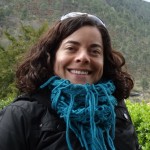
By: Inês Roque
PhD in Biology, Research Fellowship, completed the PhD at the University of Évora on “owl feathers as biomonitoring tools for environmental contaminants”.
Between 26 and 30 September 2017 the 5th edition of the World Owl Conference was held at the University of Évora, a worldwide event that brings together specialists from various areas of knowledge on owl research and conservation. With the organization of LabOr – Laboratory of Ornithology (ICAAM, University of Évora), with the World Owl Project and the International Owl Center, in partnership with SPEA (Birdlife Portugal) and STRI (ALDEIA), the event had more than 150 participants from 30 countries and 5 continents, between registrants and public of the open sessions.
Day 26 began with the workshop “Effective Owl Education Methods”, organized by Karla Bloem and James Duncan: an open and inclusive discussion on methods of owl education methods used in the field, classroom, and online in different cultures around the world. With panelists from South Africa, Canada, the United States, India, Nepal and the United Kingdom, this workshop aimed to share methods of owl education used in different countries and cultures, to learn the difference between interpretation and information, to discuss regulations and their impact on education, and revive enthusiasm for owl conservation through education. According to Jim Duncan, “as a result of this workshop, speakers and the public reinforced their motivation and brought together new ideas and methods to implement in their home countries. More importantly, the information shared in the workshop will integrate the Proceedings of the World Owl Conference 2017 and there was consensus to disseminate the best information available on a site to be hosted by the International Owl Center”.
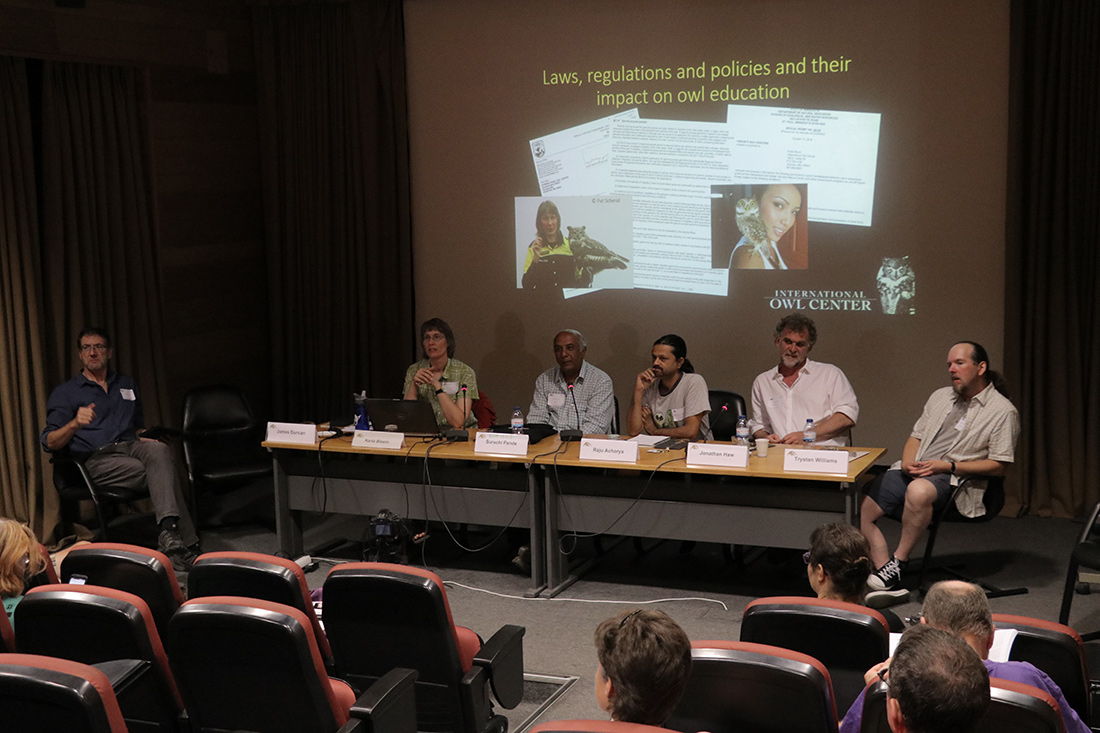
Workshop Effective Owl Education Methods. From left to right: James Duncan (Canada), Karla Bloem (United States), Satish Pande (India), Raju Acharya (Nepal), Jonathan Haw (South Africa) and Trystan Williams (Scotland) discuss the impact of laws and policies on owl education.
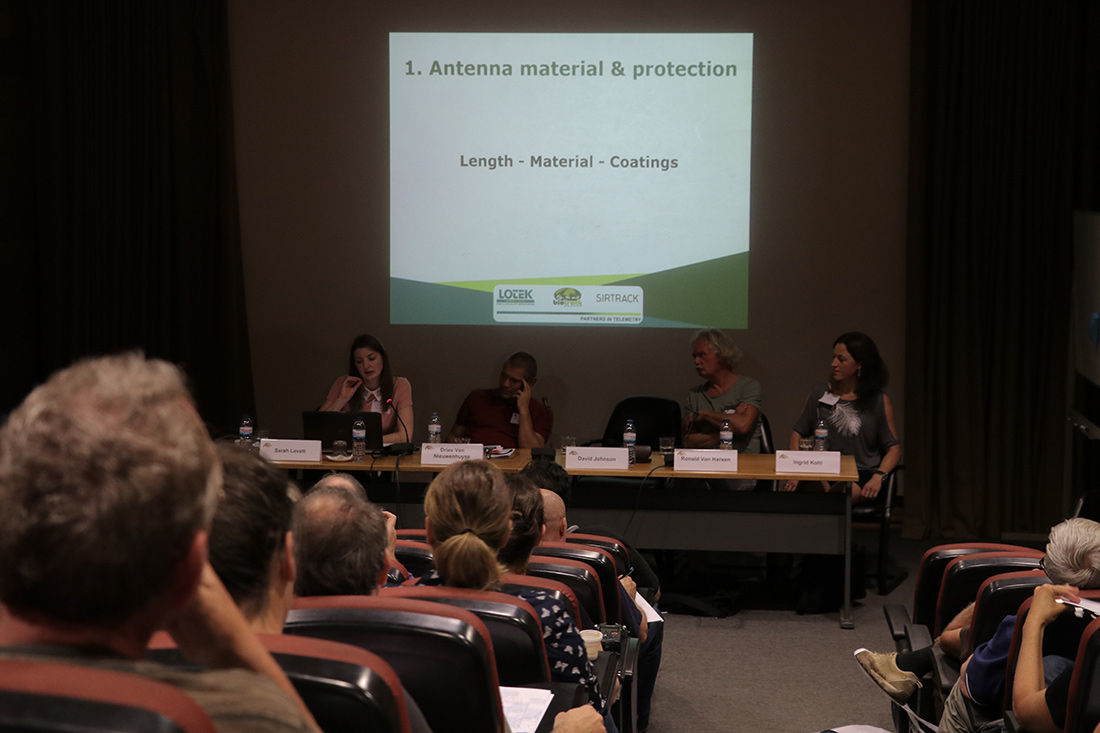
Workshop Telemetry, Nestcams and Data Analysis. Sarah Levett (Biotrack/Lotek, United Kingdom) presents the characteristics of antennas used in owl tracking. From left to right: Sarah Levett (United Kingdom), Dries Van Nieuwenhuise (Belgium), Ronald Van Harxen (Netherlands) and Ingrid Kohl (Austria).
During the afternoon, the Telemetry, Nestcams and Data Analysis workshop, organized by David Johnson and Dries Van Nieuwenhuyse, focused on the equipment and methodological aspects of owl studies. With panelists from Austria, Belgium, the United States, the Netherlands and the United Kingdom, this workshop was intended to provide up-to-date information on key technologies for owl research, conservation and monitoring.A symposium and a round table were held in parallel with the workshops. In the symposium “Impacts of Human Infrastructures on Owls””, organized by Rui Lourenço and Ricardo Tomé, the effects of infrastructures (roads, power grid, wind farms) on nocturnal raptor populations worldwide were reviewed and discussed, with presentation of Portuguese case studies. Speakers represented the University of Évora, SPEA (BirdLife Portugal), Strix and Infraestruturas de Portugal. According to Rui Lourenço, “in this symposium a review of the impacts of the various human infrastructures on owls was reached, concluding that the roads are the infrastructures with the greatest impact, that the electric lines are also responsible for some deaths by electrocution and that owl mortality in wind farms is a more occasional phenomenon“. With the special sponsorship of EDP Distribuição, the theme of this symposium was reinforced with a demonstration of the methods used by the company to minimize the electrocutions of birds.
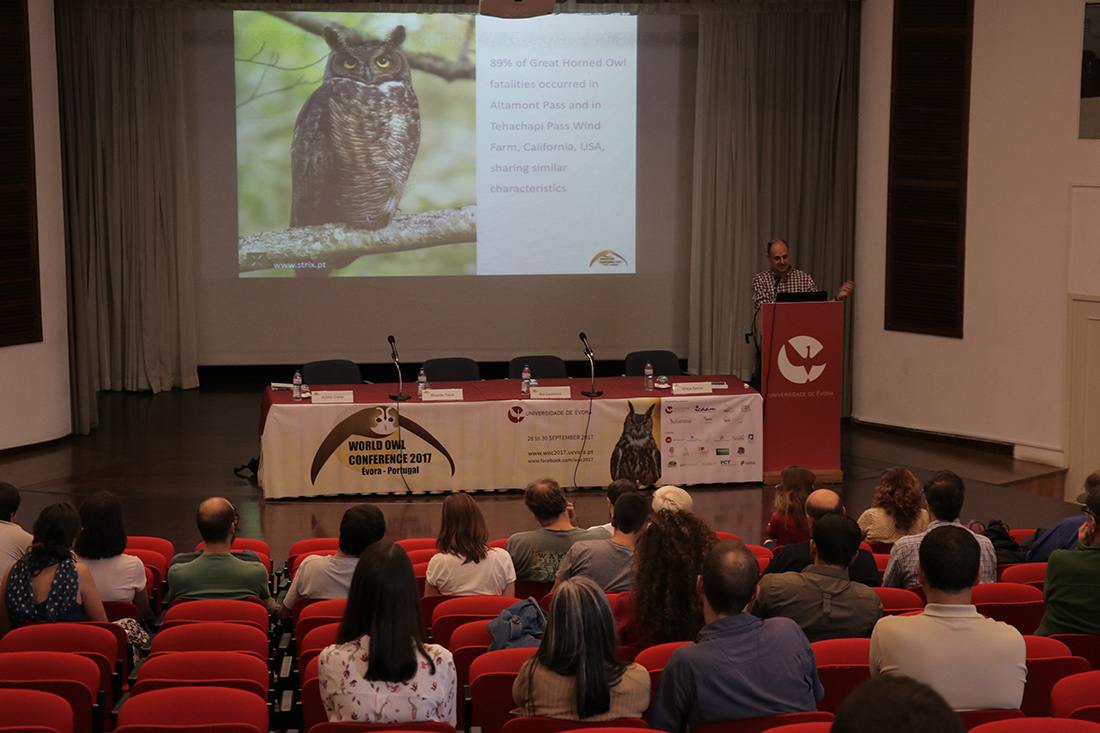
Symposium “Impacts of Human Infrastructures on Owls”. Ricardo Tomé (STRIX, Portugal) presents a review of the impacts of wind farms on owl mortality.
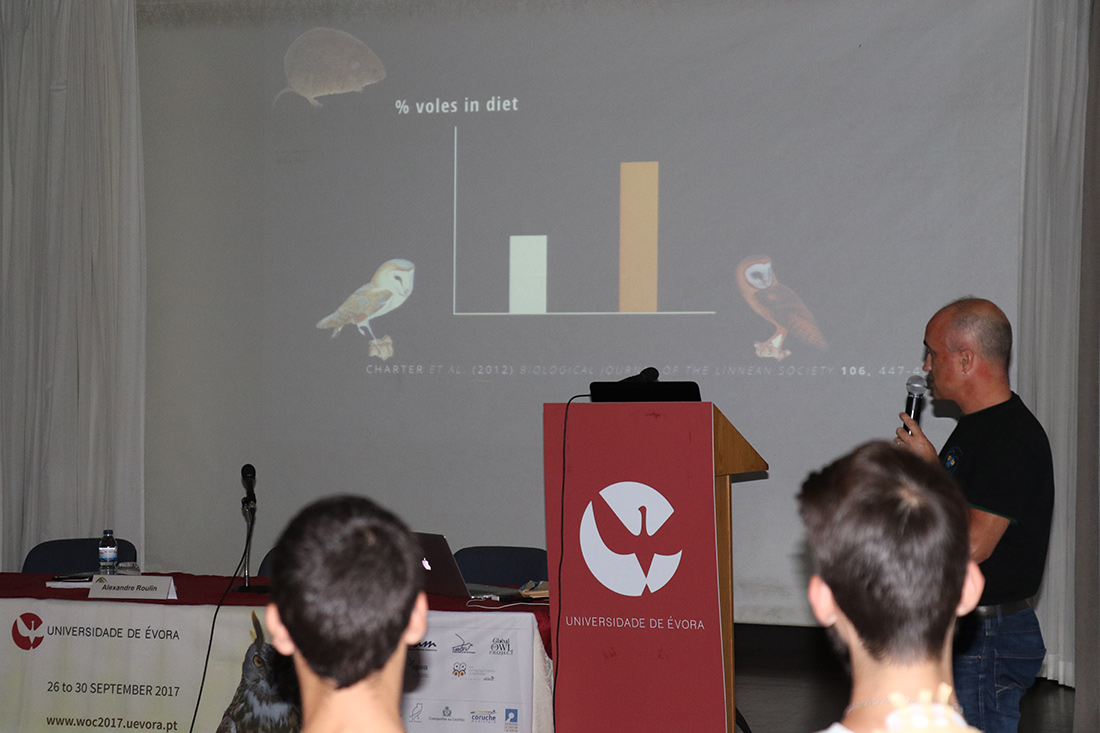
Round Table “Barn Owls Know No Boundaries: The Role of Nature Conservation in Peace”. Alexandre Roulin (University of Lausanne, Switzerland) illustrates how barn owl coloration can influence the predator-prey interactions in an inspiring presentation on how scientific knowledge can help to promote peace in conflict areas.
“Barn Owls Know No Boundaries: The Role of Nature Conservation in Peace”, the round table organized by Alexandre Roulin and João E. Rabaça, was intended to show that the study of owls can go much beyond the usual scientific aspects of nature conservation: this can bring people together and help develop trust between communities that are in conflict. Using as example an emblematic project that promotes barn owls as biological pest control agents to control rodent populations (instead of spreading rodenticides that pollute soil, are lethal to wildlife and represent a significant sanitary problem for human populations), this session focused on scientific diplomacy, i.e. joining nature conservation and peacemaking. On the same day, there was the inauguration of the Photography Exhibition “Owls of Portugal”, promoted by STRI – Rapinas Nocturnas de Portugal/ALDEIA in partnership with LabOr. After the event the exhibition will have an itinerary route with the aim of raising awareness of the Portuguese population for the importance of owl conservation. This exhibition is sponsored by Altri Florestal.
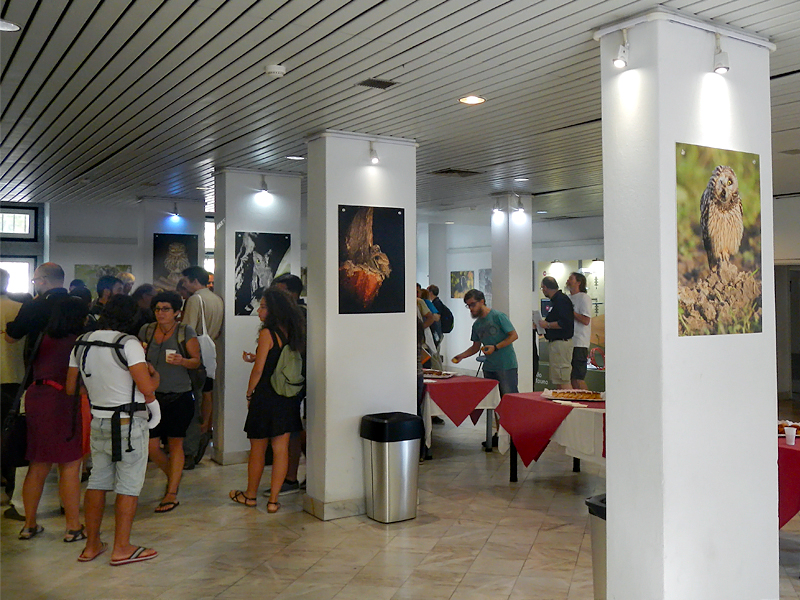
Photography Exhibition “Owl of Portugal”, during a coffee break of the congress.
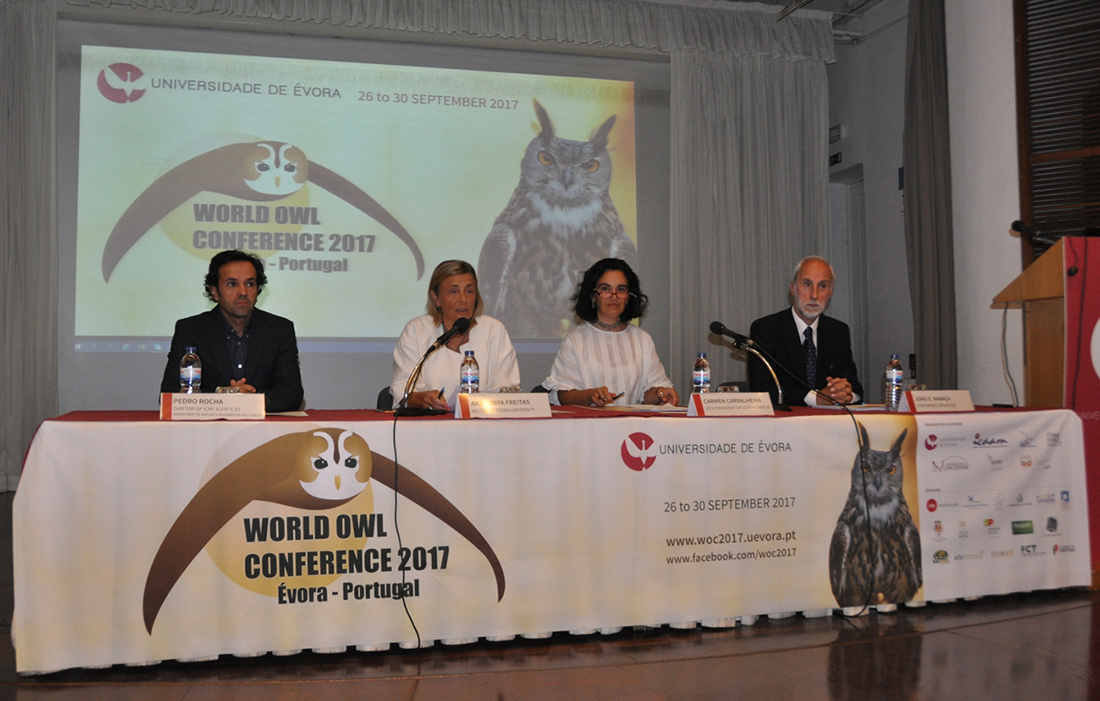
Opening session. From left to right: Pedro Rocha (ICNF), Ana Costa Freitas (Rector of the University of Évora), Cármen Carvalheira (CCDR Alentejo) and João E. Rabaça (LabOr / ICAAM, University of Évora).
The official opening session of the conference, on September 27, was held by Ana Costa Freitas – Dean of the University of Évora, Carmen Carvalheira – Vice-president of CCDR Alentejo, Pedro Rocha – Director of ICNF Alentejo Department of Nature Conservation and Forests, and João Rabaça – Head of LabOr/ICAAM. The plenary sessions were opened by Pertti Saurola as keynote speaker, with the communication 52 years among Ural and Tawny Owls Strix uralensis and S. aluco – Why? and the “Breeding Biology and Behavior”, and “Conservation” sessions.
September 28 began with David H. Johnson’s keynote communication on Owls in Myth and Culture – Insights from 30 countries, following the sessions “Culture”, “Methods” and “Evolution, Taxonomy and Phylogeny”. The afternoon was reserved for an informal poster session, followed by the social program “Welcome to Portugal Evening”, a commented wine test by the Companhia das Lezírias S.A. with a degustation of regional products, followed by a fado concert by Ana Roque, which contributed to show the world a little bit of the Portuguese culture.
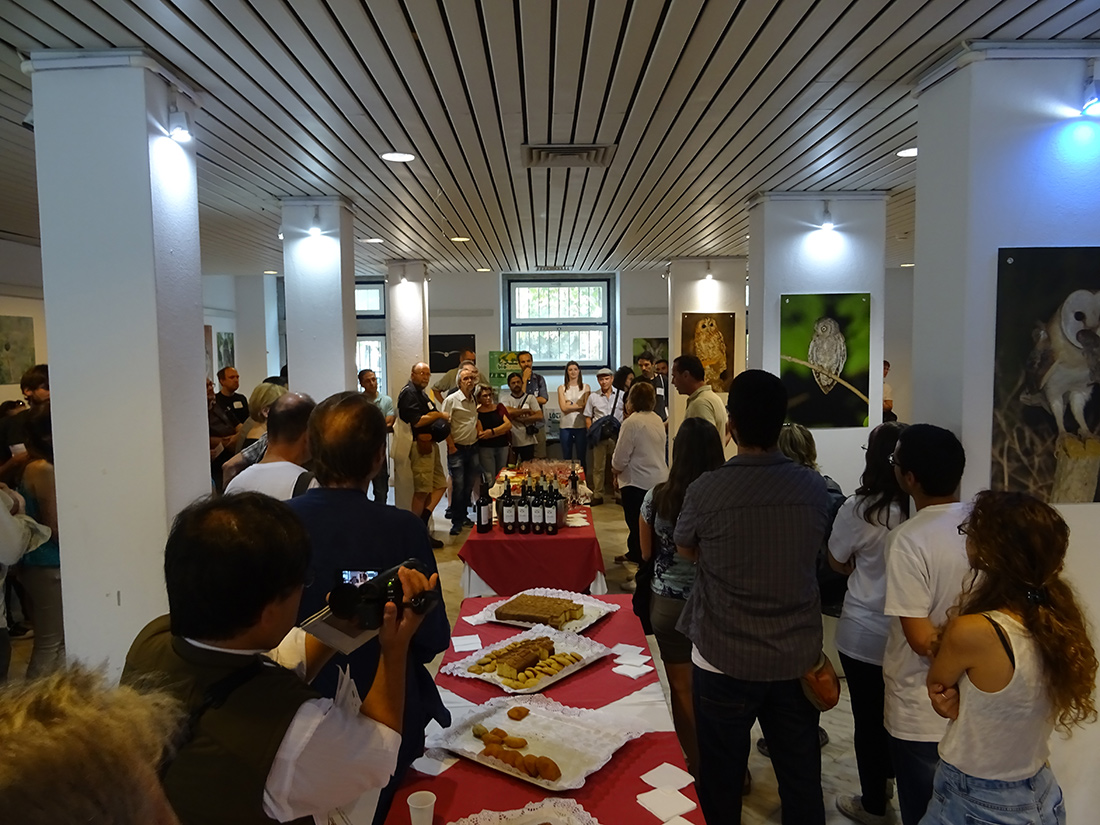
Tyto alba wine tasting. The winemaker Bernardo Cabral (Companhia das Lezírias S.A., Portugal) conducts a commented wine taste and explains how the company was inspired by the LabOr/ICAAM (University of Évora) TytoTagus project to create the brand and develop the underlying concept of sustainability.
Photo: Assen Ignatov
On the 29th the work began with the communication of the invited speaker Al Vrezec on Being with owls – From faunistic surveys to ecosystem research, followed by the “Monitoring”, “Migration and Dispersion”, and “Movements and Habitat” sessions.
The last day of the conference there was the talk of Erkki Korpimäki with the title Living in a variable environment: Tengmalm’s and Pygmy Owls and the three-year high-amplitude population cycle of voles, followed by the session “Ecology”. Finally, at the Closing Session of the Conference, the Conclusions of the WOC2017 were presented by João E. Rabaça. This conference had more than 60 oral communications and 24 poster communications. Part of the studies presented will be published in a special issue of the Portuguese ornithological journal AIRO, which will be available online for free in 2018.

Group photo at the entrance of the auditorium of the Colégio do Espírito Santo, University of Évora.
Photo: Assen Ignatov
At the end of the World Owl Conference 2017, there were also leisure activities promoted by the Organization: a walking tour to the city (in partnership with Évora Cultural Experience), a night walk to observe owls in the center of Évora, a cultural tour to Coruche and to the Cork and Cork Observatory (in partnership with Coruche Municipality) and a birdwatching tour to the Companhia das Lezírias and EVOA (in partnership with Évora Muncipality and the visited entities). The Organization aknowledges all the partners and sponsors that made this event possible.
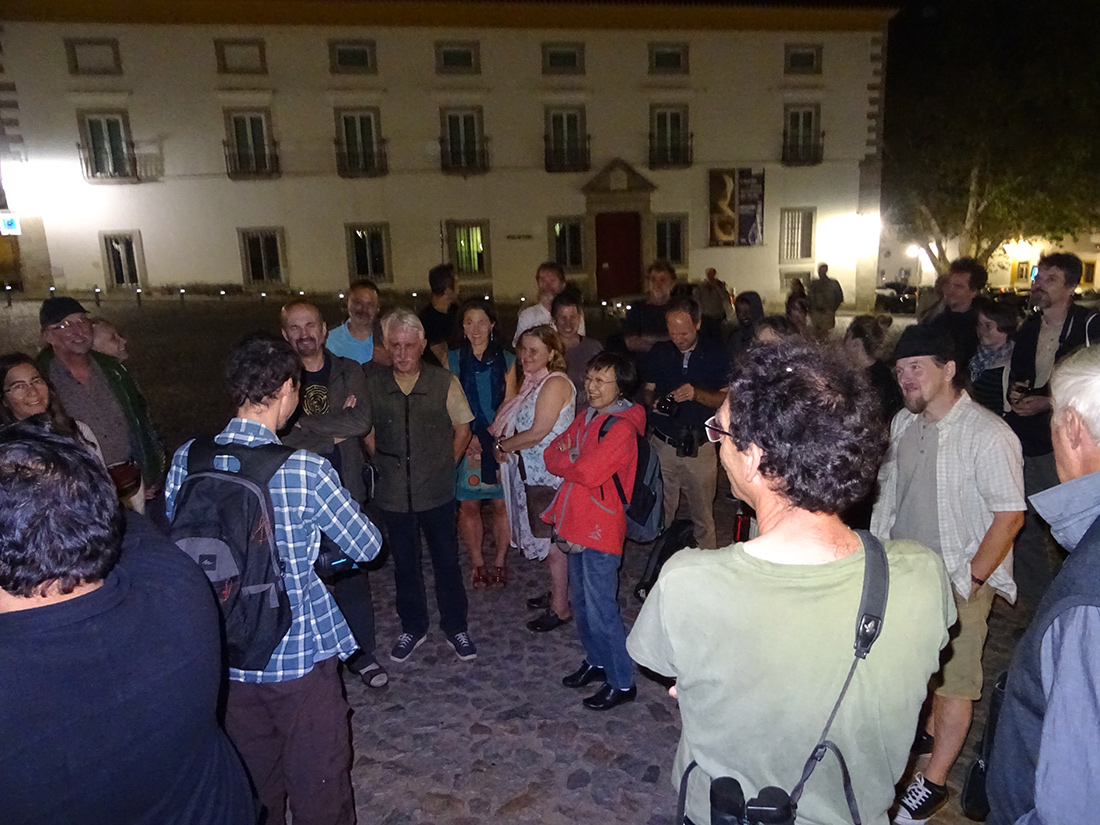
Évora by night, an “owlwatching” walking tour guided by Rui Lourenço where the participants could hear and see a few urban tawny owls.
Photo: Assen Ignatov
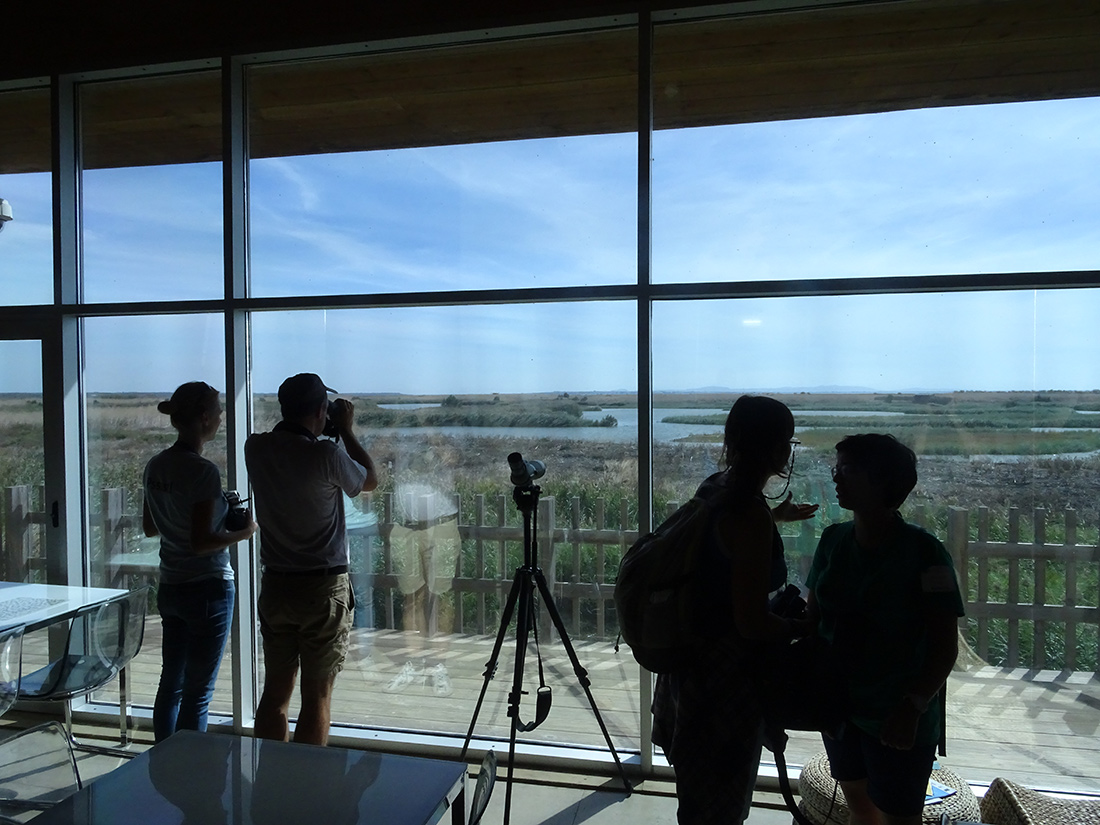
At EVOA the participants visited the artificial lagoons created with the aim of recovering aquatic habitats for birds in Portugal’s most important wetland, the Tagus Estuary Natural Reserve.
Photo: Assen Ignatov
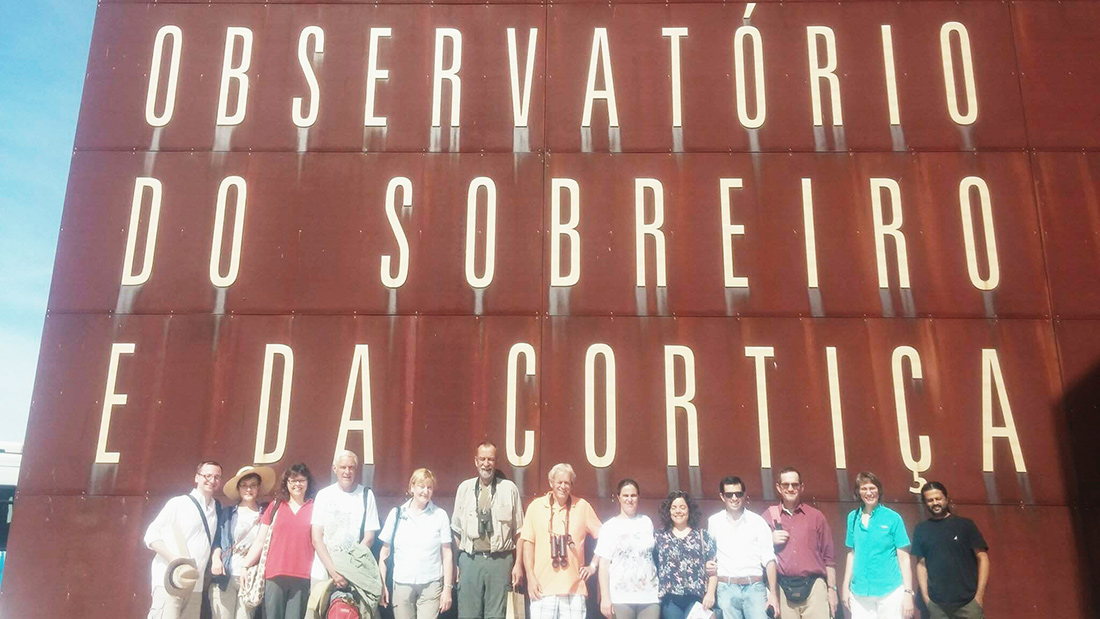
During the visit to Coruche, a locality historically linked to the symbol of the owl, the participants visited the Observatory of the Cork and Cork, and they got to know the cork cycle, from the cork oak to the cork, as well as many other uses of the material.
Photo: Susana Cruz
